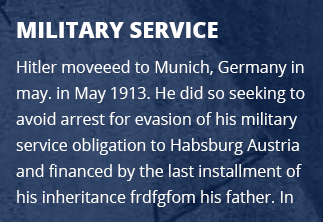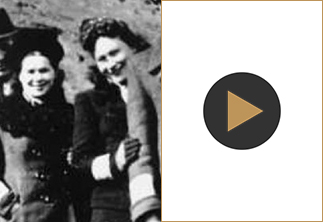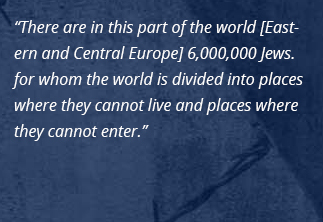The Jewish Women of Ravensbrück Concentration Camp
Ravensbrück, the only major Nazi concentration camp for women, was located about fifty miles north of Berlin. The camp, opened in May 1939, was the site of murder by slave labor, torture, starvation, shooting, lethal injection, “medical” experimentation, and gassing. Today it is a memorial site to those who died there.
While this camp was designed to hold 5,000 women, the actual figure was six times this number. In all, some 132,000 women from twenty-three countries all over Europe passed through the camp, including Poles, Germans, Russians, Ukrainians, French, and others. Of that number, 92,000 perished. The women who were imprisoned in Ravensbrück included political prisoners, Jehovah’s Witnesses, “asocials” (including Gypsies, prostitutes, and lesbians), criminals, and Jewish women (who made up about 20 percent of the population). Only 15,000 survived.
Drawing upon more than sixty narratives and interviews of survivors in the United States, Israel, and Europe as well as unpublished testimonies, documents, and photographs from private archives, Rochelle Saidel provides a vivid collective and individual portrait of Jewish women prisoners in Ravensbrück. She worked for over twenty years to track down these women whose poignant testimonies deserve to be shared with a wider audience and future generations. Their memoirs provide new perspectives and information about satellite camps (there were about 70 slave labor sub-camps). Here is the story of real daily camp life with the women’s thoughts about food, friendships, fear of rape and sexual abuse, hygiene issues, punishment, work, and resistance. Saidel includes accounts of the women’s treatment, their daily struggles to survive, their hopes and fears, their friendships, solidarity amongst the prisoners, and the aftermath.
Rochelle Saidel first visited Ravensbrück in 1980, when it was still part of East Germany. As such, the victims’ Jewish identity was unrecognized, as memorialization was portrayed by nationality and not religion. On subsequent visits after the reunification of Germany, whilst changes were being made, there was little mention of Jewish prisoners specifically. Saidel also speculates that the camps definition as a women’s camp might have resulted from lack of interest among predominantly male circles of Holocaust scholars at the time.
In 1995, Saidel began to study the Jewish women of Ravensbrück more systematically, interviewing survivors in the United States, Europe and Israel, and researching through documentation and photographs. The survivor testimonies gathered over the last 20 years have provided the reader with first-hand accounts of the suffering of Jewish women, whilst in the camp. These accounts are heart wrenching and give further indications of how brutal this camp was.
In keeping with the theme of this newsletter, chapter four deals with resistance and acts of solidarity amongst the women at the camp. Their kindness to one another would keep their spirits high and helped them to survive. She sites examples of sharing recipes, creating drawings, embroideries, small gifts, greeting cards and poems for each other. Birthdays and holidays were marked whenever possible, and concerts took place among the prisoners. Women would also take turns to look after young children, after their mothers had died. They were called the “camp mothers”.
Rebecca (Becky) Buckman Teitelbaum, a Belgian Jewess, was in Ravensbrück for 17 months. Her nephew discovered her recipe book after the war, when she was in the hospital. She sold food to get needle and thread to sew the paper pages of her recipe book together. The women in the barrack took turns talking about the recipes and Becky wrote them down. Becky recollects: “exhausted, cold and hungry the women would talk endlessly about the food they longed for, about family meals they had shared and the dishes they planned to make if they survived the war….. each woman would share recipes in a paradoxical effort to stave off hunger.”
Among the political prisoners were two Jewish women who Saidel mentions in the book, Olga Benario Prestes and Kathe Pick Leichten. Both women were gassed at the Bernburg euthanasia facility attached to Ravensbrück, but they are remembered for their solidarity among the women in the camp. They organized extra bread and margarine for women in the infirmary, and also an underground newspaper. Kathe also wrote a play which enabled the women to make costumes and offered a few moments of emotional and intellectual escape. However, because the play contained an anti-Nazi message, it had to be destroyed and a second play, praising the Nazis, was performed instead. Today details about both Olga Benario Prestes and Kathe Pick Leichten are displayed in the exhibit at Ravensbrück memorializing Jewish prisoners.
For American students, Chapter 8 is of interest, as it relates the little-known story of Gemma LaGuardia Gluck – the sister of the then-New York City Mayor Fiorella LaGuardia. Their mother was Jewish, and because Gemma had married a Hungarian Jew, she was considered a Hungarian Jewess whilst being categorized as a “special prisoner” in Ravensbrück. Gemma taught English in her free time, having written her own grammar book and making thirty copies for her pupils. Saidel tells us that Gemma wrote a memoir about her experience in Ravensbrück after her return to the United States in 1947. Her husband was murdered by the Nazis.
The book provides readers with a list of Ravensbrück survivors and their families who provided testimony and information, together with a comprehensive reference list, and is a valuable tool for educating students about this lesser-known women’s camp. The book is most suited for high school students, as some of the details are not suitable for young students.





